 July 16, 2020 John E. Ross, KD8IDJ, Editor
| ||||||
AMSAT-DL Submits Lunar Lander Proposal to European Space Agency Germany's amateur satellite organization AMSAT-DL has submitted a comprehensive proposal to the European Space Agency (ESA) for its The comprehensive radio platform would use the European frequency protocol of 2.4 GHz up and 10.45 GHz down (approximately 100 W), pioneered in the QO-100 satellite, the first geosynchronous amateur radio payload. The platform would also include a VHF/UHF transponder. AMSAT-DL would develop and build the necessary hardware and software and provide ground station support via the 20-meter dish at AMSAT-DL headquarters in Bochum, Germany. They envision developing a smaller ground station with an approximately 1-meter dish to support groups, including schools and universities. Low-power beacons would transmit on various frequencies from VHF (145 MHz) through SHF (up to 24 GHz or even 47 GHz), AMSAT-DL's proposal says. "This transponder would also be an ideal platform to develop new transmission schemes with novel modulation and coding techniques optimized for long-distance communications with the corresponding high latency (long delays)," AMSAT-DL said. "This would provide essential knowledge in preparation of a future Mars mission." In addition, LunART could include the capability to transmit still or slow-scan television images and video to schools "from cameras The proposal is on open access at the ESA website and is now being evaluated. AMSAT-DL's LunART follows the Lunar Amateur Radio Interaction Experiment (LARIE) proposal from Andy Thomas, G0SFJ. Both refer to weak signal modes and suggest the same frequency bands. Thomas said he welcomes LunART as a well-developed proposal and hopes ESA will support it as well. -- Thanks to Southgate Amateur Radio News DXCC Entities in Play as US Rejects China's Significant South China Sea Claims To radio amateurs, Scarborough Reef or the Spratly Islands are DX locations, occasionally activated to provide needy DXers with "a new one." The Spratlys are #53 on the Club Log DXCC Most-Wanted List, but Scarborough Reef -- a much more difficult piece of real estate to access -- is #4. These South China Sea Islands are once again in the news, as the US has begun putting heat on China by rejecting nearly all of its significant land claims in the region. Secretary of State Mike "The world will not allow Beijing to treat the South China Sea as its maritime empire," Pompeo said. "America stands with our Southeast Asian allies and partners in protecting their sovereign rights to offshore resources, consistent with their rights and obligations under international law. We stand with the international community in defense of freedom of the seas and respect for sovereignty and reject any push to impose 'might makes right' in the South China Sea or the wider region." A 2016 ruling from an international tribunal discounted China's claims with respect to Scarborough Reef -- also known as Scarborough Shoal -- and the Spratlys, but it did not rule on the matter of sovereignty. In addition to China's claim, Malaysia, Taiwan, Vietnam, and the Philippines have asserted ownership of the Spratlys. Scarborough Reef is claimed by China, the Philippines, and Taiwan. The Permanent Court of Arbitration in the Hague ruled in favor of the Philippines in a dispute with China over Scarborough Reef. The tribunal said that although navigators and fishermen from China and other states have historically made use of South China Sea Islands, there was no evidence that China had historically exercised exclusive
control over the waters or resources. The tribunal said China had violated the Philippines' sovereign rights and had caused "severe harm to the coral reef environment" by building artificial islands and an air strip. In 2015, a Chinese naval vessel "harassed a Philippine Air Force patrol flight in the Spratlys," one news account reported, by firing an illumination round. The incident postponed a Philippine Navy flight that was to evacuate an ailing participant of the then-just-ended DX0P DXpedition. The Chinese Navy has also warned off private aircraft. DX0P was issued by the Philippines. Last week, China complained about the US conducting joint exercises with two US aircraft carrier groups in the region. A May 2007 DXpedition to Scarborough Reef used the call sign BS7H, granted by China. DXpedition team members operated from wooden platforms mounted atop each of the reef's four rocks that were exposed during high tide. The ARRL Board of Directors voted in 1996 to add Scarborough Reef to the ARRL DXCC List. Field Day 2020 is Shaping Up to be One for the Record Books ARRL Contest Program Manager Paul Bourque, N1SFE, reported this week that ARRL has received more than 8,700 online Field Day entries, and paper-only entries have started arriving too. "As many participants chose to operate from home this year, and given the 2020 rules waivers, we have seen a tremendous increase in entries over last year's event," Bourque said. "Most of the entries Participants who submitted entries online are encouraged to check the Field Day entries received page to verify that their entries are marked as complete, and that the club name entered is correct. Entries with a status of "pending" are incomplete entries that are missing one or more items, and these need to be completed for an official entry. Share your stories and photos using the ARRL soapbox page or via social media, such as on the ARRL Field Day Facebook group. ARRL Podcasts Schedule
The On the Air and Eclectic Tech podcasts are sponsored by Icom. Both podcasts are available on iTunes (iOS) and Stitcher (Android) as well as on Blubrry -- On the Air | Eclectic Tech. Radio Amateurs Respond to Flooding in Indonesia Indonesia's International Amateur Radio Union (IARU) member-society ORARI and the National Institute of Aeronautics and Space of Indonesia (LAPAN) have activated the IO-86 amateur radio satellite to facilitate emergency communication in the South Sulawesi province in the wake of flooding on July 13. The disaster has affected nearly 5,000 Heavy rains early this week swelled rivers and sent floodwaters, mud, and debris across roads and into thousands of homes, submerging many of them. IARU Region 3 Disaster Communication Coordinator Dani Halim, YB2TJV, reports an emergency post was established near the scene of the flooding. Some traffic is being handled on HF, and radio amateurs in Region 3 are asked to keep 7.110 MHz free for emergency communications. Repairs to the power grid are under way. Local emergency managers and the Indonesian Red Cross have conducted a quick assessment in the field. The provincial road is covered in mud, preventing access to the main command post and the affected location. As of July 15, at least 16 people died, and 46 other individuals are missing. ORARI Local Soroako participated in activating the Masamba flash flood disaster relief program and proceeded directly to the disaster site. Carrying out communication support at the disaster site, ORARI Local Soroako -- with Andi Baharuddin, YC8BR, who had first headed for the disaster site -- and ORARI Local Luwu Utara were establishing emergency communication. Russian-Ukrainian Radio War May be Escalating The June newsletter of the International Amateur Radio Union Region 1 Monitoring System (IARUMS) reports that what's being called "the Russian-Ukrainian radio war" continues apace.
Jost points out that the IARU Monitoring System has little opportunity to stop the on-the-air conflict. "Only national authorities can hopefully do something against international complaints," he said. "It is very important and very helpful that many other [IARU] member-societies also observe these frequencies and make complaints to their regulators. We have to coordinate this well within IARU and act together. This is the only way we have a certain power." In May, Jost reported that the radio war has raged "for years" at 7055 kHz LSB (as well as on 7050 or 7060 kHz). Jost also reported continued daily transmissions from the Russian over-the-horizon radar known as "Contayner" in the 40- and 20-meter amateur bands and elsewhere. The Chinese "V" has been reported on 20 meters, from 14,246 to 14,256 kHz. The K7RA Solar Update Tad Cook, K7RA, Seattle, reports: Over the July 9 - 15 reporting week, we only saw sunspot activity on July 10, when the daily sunspot number was 12. The sunspot was designated as number 2766, returning for a second appearance from Solar Cycle 24. From last week to this, the average daily sunspot number declined from 3.3 to 1.7, but average daily solar flux remained at 68.5.
Predicted planetary A index is 5 on July 16 - 30; 8 and 10 on July 31 - August 1; 5 on August 2 - 8; 8 on August 9 - 10; 5 on August 11 - 26; 8 on August 27 - 28, and 5 on August 29. George Hall, N2CG, in Northern New Jersey reported an extensive 6-meter opening, which we will cover in Friday's bulletin. Sunspot numbers for July 9 - 15 were 0, 12, 0, 0, 0, 0, and 0, with a mean of 1.7. The 10.7-centimeter flux was 68.7, 68.8, 68.7, 67.6, 68.2, 68.9, and 68.4, with a mean of 68.5. Estimated planetary A indices were 4, 3, 3, 3, 6, 11, and 5, with a mean of 5. Middle latitude A index was 4, 3, 2, 3, 7, 9, and 6, with a mean of 4.9. A comprehensive K7RA Solar Update is posted Fridays on the ARRL website. For more information concerning radio propagation, visit the ARRL Technical Information Service, read "What the Numbers Mean...," and check out K9LA's Propagation Page. A propagation bulletin archive is available. Monthly charts offer propagation projections between the US and a dozen DX locations. Share your reports and observations. Just Ahead in Radiosport
See the ARRL Contest Calendar for more information. For in-depth reporting on amateur radio contesting, subscribe to The ARRL Contest Update via your ARRL member profile email preferences. Announcements
AMSAT VP Says Husky-1 CubeSat Project Helped Pave the Way for Future Missions AMSAT Vice President of Engineering Jerry Buxton, N0JY, said that while it was disappointing that the amateur transponder on HuskySat-1 (HO-107) was not available any longer, following the satellite's science missions, the overall HuskySat-1 project and mission "were quite beneficial for our partner and for AMSAT." The linear transponder module (LTM) on HuskySat-1 was operational for more than 3 months, failing during or just after a period of full sun when LTM temperatures topped 80 °C (176 °F). HuskySat-1 was the first CubeSat from the Husky Satellite Lab at the University of Washington (UW) and the first "The HuskySat-1 team was able to command their satellite and experiments and receive the telemetry they sought, and AMSAT was able to work through the extensive process of making a new design for a 'black box' radio module that can be integrated into a non-AMSAT spacecraft and fly in the space environment," Buxton said in a recent post to the AMSAT-BB reflector. "While licensed and operated as an amateur radio satellite by AMSAT during the transponder use, some facts set HO-107 apart from our Fox-1 CubeSats and other AMSAT satellites," Buxton explained, pointing out that HuskySat-1 was not an AMSAT satellite. "We have no control and may not have any insight into how a partner actually uses the LTM," he said. "While we see the LTM temperatures and many of the other typical data fields that we downlink to FoxTelem regarding LTM health, data such as temperature of the host environment as well as other specific information like power and the state of the other systems in a host satellite may or may not be available to us. Whether LTM is operated within design limits is entirely up to the host." Buxton said the HuskySat team and AMSAT cooperated smoothly on the mission. The HuskySat-1 team is processing and studying its data for use in their thesis and classes and preparing it for release "in a specific way typical of such an institution today," he said. "AMSAT is generally more forthcoming with information about our missions, but what we can and have said about this mission is determined by UW."
"HO-107 is the pilot production of LTM and was developed in partnership with UW HuskySat-1," Buxton explained. "It was the first CubeSat radio module designed and built by AMSAT for use in other host CubeSats, and UW was key in working with us through the design and processes needed to provide such a module. They did not buy it as such, nor did we give it to them as an 'off-the-shelf' product, as we plan to for future LTM production." LTM was developed from the Fox-1E linear transponder design. "Overall, the HuskySat-1 team was quite happy with the telemetry and command performance, even with the LTM anomalies showing up toward the end of their experiments," Buxton said. "In the process of getting HuskySat-1 to orbit, several students became interested in amateur radio, and we have already had preliminary discussions of future joint mission plans." "There is no doubt that HO-107 was a success in many ways beyond the operational life of the transponder," Buxton added. -- Thanks to AMSAT News Service In Brief...
Getting It Right In the July 9 edition of The ARRL Letter, a "slight" miscalculation in an announcement about a new KiwiSDR in Iceland led to an incorrect metric-to-English conversion. The item should have said, "at an altitude of 690 meters (about 2,298 feet)." Upcoming ARRL Section, State, and Division Conventions Note: Many conventions and hamfests have been canceled or postponed due to the coronavirus pandemic. Check the calendar of canceled events on the ARRL website.
Find conventions and hamfests in your area. ARRL -- Your One-Stop Resource for . .
Subscribe to...
Free of charge to ARRL members...
| ||||||
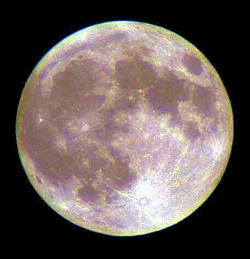 Lunar Amateur Radio Transponder (LunART) lunar lander -- a communications platform on the Large European Lander to support communication and payload experiments. AMSAT-DL's Peter Guelzow, DB2OS, and Matthias Bopp, DD1US, say that a LunART (called "LunaART" in the
Lunar Amateur Radio Transponder (LunART) lunar lander -- a communications platform on the Large European Lander to support communication and payload experiments. AMSAT-DL's Peter Guelzow, DB2OS, and Matthias Bopp, DD1US, say that a LunART (called "LunaART" in the 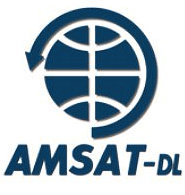 attached to the lander monitoring the moon surface and perhaps the Earth in the background [which] would be ideal stimuli for getting school kids and STEM organizations further interested in space."
attached to the lander monitoring the moon surface and perhaps the Earth in the background [which] would be ideal stimuli for getting school kids and STEM organizations further interested in space." Pompeo this week said that the US now regards virtually all Chinese maritime claims outside of its internationally recognized waters to be illegitimate.
Pompeo this week said that the US now regards virtually all Chinese maritime claims outside of its internationally recognized waters to be illegitimate.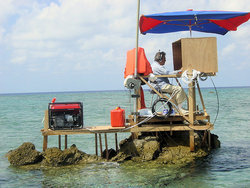
 received have been through the online
received have been through the online 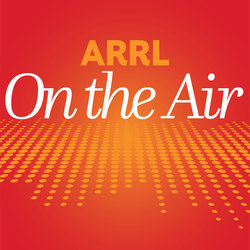 The latest episode of the On the Air podcast (Episode 7) features tips for soldering a PL-259 connector onto the end of a coaxial cable, and information on beginner courses for hams who want to serve their communities during disasters and other incidents. The On the Air podcast is a monthly companion to On the Air magazine, ARRL's magazine for beginner-to-intermediate ham radio operators.
The latest episode of the On the Air podcast (Episode 7) features tips for soldering a PL-259 connector onto the end of a coaxial cable, and information on beginner courses for hams who want to serve their communities during disasters and other incidents. The On the Air podcast is a monthly companion to On the Air magazine, ARRL's magazine for beginner-to-intermediate ham radio operators. The latest episode of the Eclectic Tech podcast (Episode 12), available on Thursday, July 16, will feature a discussion with Bob Allison, WB1GCM, about low-frequency activities, plus an update on the status of NextGen TV.
The latest episode of the Eclectic Tech podcast (Episode 12), available on Thursday, July 16, will feature a discussion with Bob Allison, WB1GCM, about low-frequency activities, plus an update on the status of NextGen TV.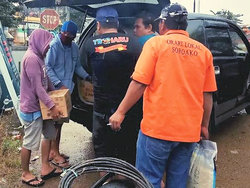 families, according to Indonesia's National Disaster Management Authority (
families, according to Indonesia's National Disaster Management Authority (.JPG) "The Russian-Ukrainian radio war remained on a high escalation level also in June," IARUMS Region 1 Coordinator Peter Jost, HB9CET, said. "Almost every day, we heard the massive spiteful and provocative broadcasts. In June, they used more frequencies than before, affecting our bands very hard. It is a great annoyance and a big shame!"
"The Russian-Ukrainian radio war remained on a high escalation level also in June," IARUMS Region 1 Coordinator Peter Jost, HB9CET, said. "Almost every day, we heard the massive spiteful and provocative broadcasts. In June, they used more frequencies than before, affecting our bands very hard. It is a great annoyance and a big shame!"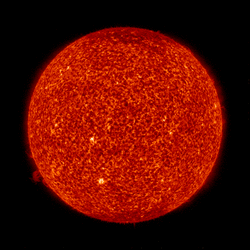 Predicted solar flux remains low, further evidence of this long, deep solar minimum. All flux values for the next 45 days are predicted to stay below 70. The predicted 10.7-centimeter solar flux is 69 on July 16 - 22; 68 on July 23 - 24; 69 on July 25 - August 1, 68 on August 2 - 20; 69 on August 21 - 28, and 68 on August 29.
Predicted solar flux remains low, further evidence of this long, deep solar minimum. All flux values for the next 45 days are predicted to stay below 70. The predicted 10.7-centimeter solar flux is 69 on July 16 - 22; 68 on July 23 - 24; 69 on July 25 - August 1, 68 on August 2 - 20; 69 on August 21 - 28, and 68 on August 29. ARRL has a new way to let members know when the digital editions of QST and other publications are available. Distributed via email, The ARRL Current offers a monthly overview of ARRL publications and member benefits. The inaugural edition launched in June. Subscribe now to receive each issue going forward. Manage your email preferences from your
ARRL has a new way to let members know when the digital editions of QST and other publications are available. Distributed via email, The ARRL Current offers a monthly overview of ARRL publications and member benefits. The inaugural edition launched in June. Subscribe now to receive each issue going forward. Manage your email preferences from your (1).jpg) mission with AMSAT's LTM V/u transponder onboard. University researchers conducted their work using an FCC Part 5 Experimental license.
mission with AMSAT's LTM V/u transponder onboard. University researchers conducted their work using an FCC Part 5 Experimental license..jpg) Buxton said the LTM concept is now becoming available for other non-AMSAT CubeSats to fly amateur radio on their mission.
Buxton said the LTM concept is now becoming available for other non-AMSAT CubeSats to fly amateur radio on their mission.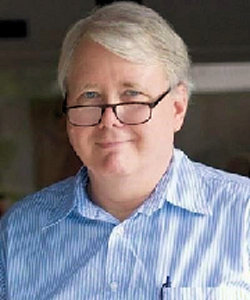 Former North Texas Section Manager Tom Blackwell, N5GAR, of Dallas, Texas,
Former North Texas Section Manager Tom Blackwell, N5GAR, of Dallas, Texas, -Phare-d%E2%80%99Alistro.jpg) International Lighthouse Lightship Weekend is on track for 2020. Registrations for this year's popular International Lighthouse Lightship Weekend (
International Lighthouse Lightship Weekend is on track for 2020. Registrations for this year's popular International Lighthouse Lightship Weekend (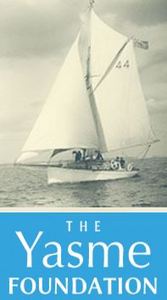 The Reverse Beacon Network (RBN) will gain 15 new nodes, thanks to a Yasme Foundation supporting grant. These new nodes will be added in regions where there is a need for reception reports to support amateur radio operation and where those reports will also have scientific value for geophysical research. Yasme was assisted in this effort by supporting grants from Amateur Radio Digital Communications (
The Reverse Beacon Network (RBN) will gain 15 new nodes, thanks to a Yasme Foundation supporting grant. These new nodes will be added in regions where there is a need for reception reports to support amateur radio operation and where those reports will also have scientific value for geophysical research. Yasme was assisted in this effort by supporting grants from Amateur Radio Digital Communications (







